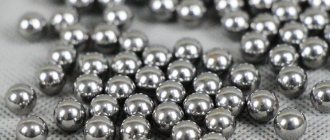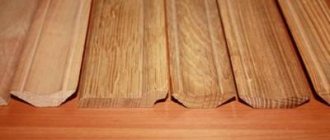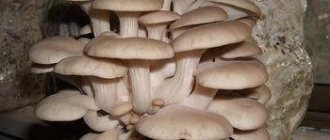It is difficult to deny that compressed sawdust briquettes are one of the most efficient types of fuel successfully used for heating residential buildings.
They have a high calorie content (about 5 kW is released from 1 kg when burned) and have a low ash content. Such briquettes are very convenient to store and stack, as they fold compactly and do not take up much space. True, such fuel cannot be considered cheap: not every family can afford to heat their home with wood throughout the entire season. This raises a reasonable question: is it somehow possible to make wonderful fuel briquettes with your own hands. This is especially true in cases where the raw materials can be purchased almost at a bargain price. Fortunately, such techniques exist, and they may differ from each other. Let's look at some of them.
Production of briquettes in production
To get a clear understanding of how to make briquettes yourself, including for the Buleryan stove, you first need to know how they are made in a factory.
Raw materials
Any of the available methods is preceded by a preparatory stage, during which the raw materials are crushed and dried.
The raw materials are sawdust and some larger parts of wood processing waste. Drying is carried out until humidity levels approach 8-10 percent. Interestingly, all kinds of agro-industrial waste (for example, husks or seed husks) and coal dust can also be used as raw materials for Eurofirewood.
Briquetting
The next production process is sawdust pressing, or briquetting. Today this can be done in two different ways:
- Extrusion method;
- Forming briquettes on a special hydraulic press.
In both cases, as a result of powerful compression of crushed wood, lignin, a special natural substance, begins to be released from it. It is this that becomes the binding composition for the crumbly mass of raw materials. The difference in the processes consists only in different compression methods. In one case, a hydraulic press is used, capable of developing a force of up to 300-600 Bar.
The force of this compression heats the shredded wood, and this contributes to the formation of a solid rectangular briquette.
With another method, extrusion, wood raw materials are poured into a special hopper of the unit, and, by analogy with a meat grinder, it is moved by a screw into a conical working channel, which narrows. It is there that the compression takes place, during which the screw press develops an incredibly powerful force of up to one thousand bar.
When ready, firewood made from sawdust comes out of the extruder in the form of hexagons. Before this, they undergo heat treatment and are cut with a special knife to exact dimensions.
Fuel briquettes at home
It is completely unrealistic to imagine a situation where someone decides to purchase such a powerful unit capable of pressing briquettes at home. Even if finances allow this to be done, and the raw materials will be obtained for free, the purchase will only be recouped if the produced fuel is sold on a large scale.
In other words, it is clear that it will not be possible to implement the traditional method, which would release lignin, at home. But numerous home craftsmen, through trial and error, learned to use other binding materials.
Raw materials and preparation
- corrugated cardboard, paper;
- the cheapest glue, for example, wallpaper;
- clay.
Savvy homeowners have gotten the hang of pressing heating briquettes from a variety of available materials that can burn:
- from paper,
- leaves,
- straw,
- cardboard,
- seed husks and other things.
- Sawdust is placed in water, clay is added there in a ratio of 1 to 10, stirred well, then inexpensive wallpaper glue or soaked cardboard is added to the composition.
- The mixture obtained in this way is placed in a homemade pressing mold, and squeezed as hard as possible using hand force.
- The formed rectangles are taken out of the mold and laid out to dry outside, naturally.
Manual screw mechanism
The simplest press for the production of fuel bars, which you can make yourself, has a manual screw drive.
The design of this mechanism is extremely simple. But the productivity of such a screw device is low - this explains their low popularity.
A special molding container with holes is filled with the finished mixture, the screw is tightened tightly, creating increased pressure.
Brick ejection mechanism
It is much easier and much faster to extrude molded briquettes on another press. It is also homemade, but features a long lever and a special device for pushing out the brick. To speed up the process, some people weld not one mold, but a pair, to the frame.
Some craftsmen are capable of producing other, more advanced equipment. How to increase the productivity of a manual machine? By installing a hydraulic jack instead of a manual drive. Of course, to produce such a unit you will have to put in a lot of effort, but the result deserves it.
Waste briquetting device
Homemade press
If you plan to use heating briquettes for winter heating of a country house in winter or as an alternative fuel in an individual house, it is quite labor-intensive to make them manually.
In this case, it is advisable to make a simple machine that will speed up and facilitate the work. Today, various modifications of machines are available for sale. They differ in functionality, the number of cells in the forms, and the type of drive - manual or mechanical.
All models have one thing in common - they allow you to mechanize the most labor-intensive process - compacting the wet mass in the cells of the mold.
The simplest machine is a metal frame welded from a corner, on which a wooden tabletop painted with moisture-resistant paint is fixed. A “P”-shaped bracket is welded to the frame, between the uprights of which a swinging lever is fixed - a rocker arm, the length of which determines the compression force.
A punch is hinged on the lever, the dimensions of which are slightly smaller than the dimensions of the cells. A mold filled with briquette mass is placed on the countertop and pressed with a punch until the briquettes are given the required density. Moving the mold along the tabletop, the pressing operation is repeated for each cell.
Some “craftsmen” abandon the welded structure and knock together a bracket and frame from boards and thick bars. It all depends on the volume of production.
In order for the press to last long enough, after each pressing operation it should be cleaned of adhering mass.
If the gardener has the opportunity to obtain or make a vibrating plate, then a press is not required. The sawdust-clay mass is compacted due to vibration.
Main advantages
Fuel briquettes are a modern type of alternative fuel. They can be used in any stoves, fireplaces, boilers, grills, barbecues. Eurobriquettes are cylindrical billets resembling firewood, or rectangular bricks. Small dimensions allow them to be placed in fireboxes of any size.
What are briquettes made from? Most often, wood is used (sawdust, shavings, dust), but straw, paper, peat, coal, seed or nut husks, and even manure are also used. The composition of eurobriquettes can vary significantly, depending on what technology is used in production.
At the same time, all types of raw materials from which firewood can be produced are natural, absolutely natural. Making fuel briquettes at home will allow you to create an environmentally friendly product that will burn almost completely in the furnace firebox and at the same time emit a minimum of smoke.
A home-made eurobriquette can be used to light a sauna stove or heat a home. Since the raw material is compressed quite strongly and the amount of moisture is minimal, the fuel briquette burns for a long time, constantly releasing a large amount of heat. An interesting point was noticed by people who are already actively using such fuel: if you heat your barbecue with eco-wood and fry food on it, if fat gets on the briquettes, it will not ignite.
For stoves, boilers and fireplaces that burn solid fuel, sawdust briquettes are an excellent option. They flare up slowly, but then burn for a long time and emit a large amount of heat. This is explained by the high density of the pressed wood product. The heat transfer from briquettes significantly exceeds the level of heat obtained from the combustion of even the driest firewood, the storage and drying of which took at least a year.
Advantages of pellets over other types of solid fuel
The wide distribution of fuel briquettes, which are also called eurowood and pellets, is due to a whole list of their advantages:
- compact size, which ensures ease of storage and transportation;
- emitting a small amount of smoke and minimal sparking during combustion;
- long burning period (when compared with ordinary firewood, pressed sawdust fuel burns at least twice as long);
- environmentally friendly (compressed from waste materials of natural origin, fuel briquettes do not emit substances harmful to humans and the environment when burned);
- low ash content (the amount of ash formed after complete combustion of pellets does not on average exceed 1% of the total mass of fuel used).
The main advantages of fuel briquettes are long burning and minimum ash
Equipment and raw materials
You can create fuel briquettes with your own hands from various types of human waste. In principle, you can use any substance that can burn normally. What household waste can become valuable raw materials:
- First of all, wood, sawdust and shavings, wood dust, leaves and tree branches. The type of wood does not play a primary role, but it is better that the sawdust be birch, oak, alder or aspen.
- Straw left over from the harvest of wheat or corn.
- Cardboard and paper. It is much easier to make fuel briquettes from paper yourself than from wood, but the paper version will burn out faster.
- Residues and husks of seeds and nut shells can be good but rare raw materials.
The composition of briquettes can be different, and hence the different adhesive capabilities of the mixture. Depending on the raw materials used, clay is added to some briquettes to help bind the elements, usually in a ratio of 10 to 1.
To create homemade fuel briquettes you will need special equipment. You can order an entire line for home production at once by contacting a specific company, or you can assemble the equipment in parts, because the technology for making fuel briquettes is essentially simple.
The whole technology is based on three stages of production:
- The first stage involves the initial preparation of raw materials. The existing waste should be crushed and crushed to the required consistency so that the composition of the mixture is homogeneous.
- The second stage involves bringing the mixture to a ready-made state by drying. The drying machine removes moisture from the raw material.
- The third stage involves the manufacture of products; here fuel briquettes are pressed on a special machine under high pressure and temperature.
Accordingly, for each stage you will need to select a machine suitable for your raw materials: a crusher, a dryer and a press.
By and large, the production of fuel briquettes with your own hands is not much different from industrial production, except that they do not apply inflated criteria to the quality of products and do not pack the finished products in a hermetically sealed shell.
Another difference with home production is that you can, in principle, eliminate the dryer from the line. You can dry raw materials and briquettes naturally under the sun. By the way, if the raw materials are ready-made sawdust or seed husks, then you may not need a crusher.
Particularly skilled craftsmen make the press themselves, based on their needs and capabilities. Nowadays, access to information is not limited, so drawings of any type of device can be found freely available on the Internet. By assembling your press according to the drawings, you can make a unique briquetted product that will burn perfectly in furnace fireboxes.
Friends who already deal with similar home-made or factory-made equipment can tell you how to make a press machine. You can choose a screw, hydraulic or shock-mechanical option.
To install the equipment you will need a decent room. It will have to accommodate all the machines, raw materials and resulting products. It is advisable to provide comfortable conditions for drying so that the humidity of the briquettes is minimal, so take care of ventilation. To connect the machines you will need electricity, and since we produce fuel, we should not forget about fire safety measures.
Pressing process
Well-made fuel briquettes often have a very unsightly appearance, but this does not in any way affect their effectiveness.
The most important stage has arrived - it consists in pressing the prepared raw materials. To do this, we assemble and check the press, clear a place for storing finished pressed blocks. Please note that after pressing they will be damp and sticky, so you cannot stack them on top of each other - they will simply stick together. To place fuel briquettes after pressing, we recommend using a sheet of plywood or flat slate.
Nothing prevents you from using any other flat surfaces available for storing fuel.
We install a removable container in the press into which the piston will fit. We send there a small amount of previously prepared raw materials. We press the handle of the homemade press, making sure that as much water as possible comes out of the raw material. One pressing takes about 30 seconds. As soon as you are sure that the compressed mass contains a minimum of moisture, remove the piston and remove the almost finished fuel briquette - it is sent for drying.
In a similar way, we process and press all previously prepared raw materials, placing the finished products in a pre-prepared place.
You can make briquettes for the firebox yourself ↑
Briquettes are often made with your own hands using a simple press.
German equipment of the RUF brand for the production of fuel briquettes is widely known
The production of briquettes from waste paper and printing waste is popular:
Most often, do-it-yourself fuel briquettes are made from sawdust, straw or paper as the most common and therefore affordable types of raw materials.
This topic of making homemade fuel briquettes is of particular interest to gardeners - many are not averse to heating their greenhouses and garden houses in this way, especially since pasture is usually available in garden plots.
Raw materials for making briquettes ↑
Fuel briquettes are made from various waste materials. This can be sawdust, shavings, wood chips, straw, it can be coal dust, as well as plant materials - the husks of seeds and nuts, dry stems or bark of almost any plant, fallen leaves. In short, as you understand, almost any potentially flammable material (in crushed form) that is not needed by the farm in any other capacity can be used. The most common clay is often used as a binding component. For 10 kg of crushed dry raw materials, approximately 1 kg of clay will be required. To give fuel briquettes approximately the same shape so that they can be easily stored in a compact form, special cells are made, for example, from boards (from existing containers or boxes).
Crushed raw materials prepared for fuel briquettes are poured into the container, the mass is sprinkled with clay, then water must be added to the prepared mass in such a way that this whole “porridge” is easily mixed and shaped. Next, briquettes are molded from this mixed mass (if manually) or the mass is poured into molds, properly pressed, and left to air dry. The briquettes will dry out faster in the sun.
To make the products stronger, you can cover them with rags or paper on top and bottom and then press them all together.
Features of use
Sunflower briquette
Before you begin recycling waste on your personal or garden plot and start production, you need to decide on the scope of use of briquetted fuel and calculate the need for the source material.
If briquettes are intended to be used as an alternative, additional fuel for combustion in a stove or fireplace in a country house, then any plant waste can be used as the starting material:
- Sawdust, shavings, wood chips, chopped small branches left after pruning trees.
- Agricultural waste – dry plant stems, straw, seed husks.
- Garden waste that is usually burned or composted - dry grass (weeds), fallen leaves, root crop tops.
- Household waste – cardboard, paper.
Some gardeners use plastic film as an additive to plant matter. However, there are no official recommendations on this matter and the use of plastic waste is carried out at the own peril and risk of the manufacturer and consumer of briquettes.
Clay or starch is used as a binding material.
Fuel briquettes made of paper ↑
We often have waste paper accumulating in our house, which we don’t know what to do with. Of course, you can sell it for 2 rubles per kg. But this money is unlikely to be enough for you to buy fuel for the winter. But from the same paper you can make excellent fuel in briquettes with your own hands.
The technology for making paper briquettes for fuel is simple, it is well developed and tested. The burning duration of such briquettes is about 2 hours; as for the calorific value, it is even significantly higher than that of coal briquettes. And there is very little residue in the form of ash after combustion - approximately 5% (versus 80% that remains after burning simple newspapers). So, as we see, there are only advantages. Unless it will require time and some of your own labor.
Master class: mini-fireplace from one box
Sometimes you want to festively decorate not only your home, but also your office or your workplace. In this case, it is enough to make a mini-fireplace that can be placed on a windowsill, an open shelf or a desk.
For the craft you will need:
- 1 medium size box;
- 3 small elongated boxes;
- glue gun or regular PVA glue;
- a piece of cardboard for the mantelpiece;
- a piece of wallpaper with brickwork or self-adhesive oilcloth;
- white water-based paint;
- decor (fir branches, garlands, candles);
- scissors and pencil.
We present step-by-step manufacturing instructions:
At the bottom of the box we glue all the doors. On the front side we bend one long flap (it will serve as the protruding base of the fireplace), and glue the other to the two short flaps.
We place small boxes around the perimeter of the resulting window and make markings with a pencil.
Using the markings made, we expand the window, cutting off the excess cardboard with scissors. Then we glue the boxes.
We cut out decorative elements from cut cardboard (you can come up with something original). We glue the blanks and planks onto the fireplace.
We glue the cardboard mantelpiece; it should protrude 4-5 cm, forming a canopy. We paint the craft with white paint in several layers. It is advisable to paint on all sides.
We fix the decor made of plastic or metal with polymer glue. On the inner wall and on the protruding bent base, glue a piece of wallpaper cut to size.
We complete the decoration with New Year's decor and candles.
Press diagram ↑
To make paper briquettes yourself, you will need to make a simple press. The diagram of a briquette press is shown in the figure:
Press for forming fuel briquettes from paper. The dimensions of the press can be adjusted depending on the size of the heating equipment
How to make a press for briquettes from waste paper with your own hands (video)
If you have your own original ideas on how to make the heating of your home or other premises (cottage, garage, greenhouse) more economical, write to our magazine addressed to Mikhail Eisley (address published in the Contacts section). We will be happy to discuss any new technologies with our readers.
What are they needed for
Artificial firewood in an electric fireplace
Many people will wonder why such dummies are needed? Well, firstly, it's a matter of aesthetics. And secondly, you don’t need deep knowledge of stove equipment to notice the difference between a fireplace with an electric heating element and a wood-burning fireplace.
Due to the absence of smoke and rapid heating of the room, electric fireplaces are an advantage when compared with a wood-burning fireplace. But with all this, a certain naturalness of the hearth is lost, its charm and charm are lost. If you add dummy firewood to such a design, the picture of the fireplace changes radically.
This situation is especially relevant for a city apartment, where installing a real fireplace is simply impossible.











